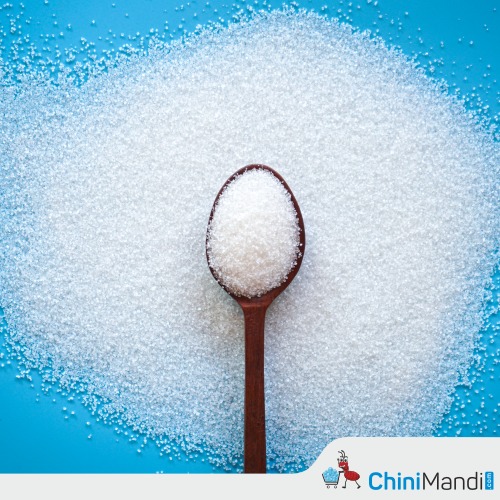International Sugar Organization (ISO) presented third revision of the global 2023/24 sugar balance. ISO’s fundamental view of the global supply/demand situation has shifted to a larger deficit of 2.954 mln tonnes, from 0.689 mln tonnes in February. Forecast world production is revised down to 179.270 mln tonnes (-0.479 mln tonnes) while consumption is increased to 182.224 mln tonnes (+1.786 mln tonnes). Furthermore, the reconciliation of the 2022/23 balance has resulted in a deficit of 1.153 mln tonnes, from a small surplus of 0.308 mln tonnes previously. Updates from ISO members show higher demand in 2022/23 (+1.048 mln tonnes) than previously anticipated. The biggest anticipated season-on-season change in production is in Brazil (+1.038 mln tonnes), albeit much smaller than last season’s increase (+11.273 mln tonnes), with the increase in China now standing +0.98 mln tonnes. Reductions in forecast production are expected for Thailand (-2.250 mln tonnes), India (-1.100 mln tonnes, with our estimate left unchanged at 31.7 mln tonnes of sugar) and Mexico (-0.580 mln tonnes).
Changes in trade dynamics are key market considerations. The ISO anticipates a trade deficit of 1.379 mln tonnes, up from a deficit of 0.282 mln tonnes previously, and in line with the bigger deficit in production/consumption. Exports are revised lower for India (-1.7 mln tonnes) amongst other downward revisions, while an increase in Brazil’s exports has resulted in an upward revision (+1.4 mln) for the season. Import demand was reduced (-0.635 mln tonnes) to 66.821 mln tonnes, with China import demand falling due to forecast higher domestic production (-0.650 mln tonnes).
According to the ISO, the bigger deficit projected for 2022/23 and 2023/24 has impacted our outlook for the stock-to-consumption ratio, which has fallen to 53.54%, while our alternative methodology, incorporating processing losses at raw sugar refineries, has returned a figure of 40.07%, a 13-season low. The widening notional deficit between global production and consumption, alongside an expanding gap between import and export volumes, and the speculative short positions contribute to a transition in the market sentiment for prices. The ISO has shifted from a neutral to a more bullish outlook over the next three months.

ISO in a report stated that the last three months, since our previous Quarterly Market Outlook, saw the ISA Daily Price and the ISO White Sugar Price Index fall to USD18.92 cents/lb and USD542.60/tonne, respectively. Price dynamics, especially around expiries have resulted in a narrowing of the nominal white sugar premium to around USD125/tonne, a 15-month low, although futures related costs, such as the polarity premium and processing losses, have declined to around USD25/tonne, down USD10/tonne from its September 2023 high. Freight market indices, the other big cost for importers, has seen little upward momentum so far in 2024.
In domestic markets followed by the ISO, the three-month change in domestic prices outperformed the ISA decline of 12% during the period, with USD-converted Brazil values down 6%, as were prices in Mexico, while Russian prices were up 3% in the period.
World ethanol production in 2024 has been estimated at 116.1 bln litres, up from 115.7 bln litres in 2023. A decline in output in Brazil (-0.51 bln litres), is more than offset by increases anticipated in India (+0.26 bln litres), EU (+0.20 bln litres), US (+0.20 bln litres) and other producers. Meanwhile consumption in 2023 is estimated to reach 110 bln litres, up 1.9 bln litres from 2023. Byproduct and carbon credit prices have remained weak in recent months, while the domestic US ethanol price has recovered from a low of USD1.50/gallon, in line with higher US corn prices.
Global molasses production is projected to increase to 68.5 mln tonnes in 2023/24, but this is not likely to boost export availability. Meanwhile, S&P Global projects a 1.2 mln tonnes decline in production in the 2024/25 season. These factors are expected to ensure that the molasses market remains tight. Molasses uses, by feed blenders, has been under pressure as alternative ingredients, such as feed wheat or corn, have fallen in price. US and EU import demand is anticipated to be lower in 2024 as a result.
Global high fructose syrup (HFS) production and use is not expected to see significant growth in 2024. In the US, the dominant HFCS market, production is predicted to rise by 1% to 7.66 mln tonnes in 2024. Stronger shipments to Mexico will outweigh a further small reduction in domestic offtake. Meanwhile, lower corn prices are partly offset by lower values for corn oil, and gluten products.
At the 13th ministerial meeting of the WTO, little progress was made on Agriculture, with the subsequent Committee on Agriculture (CoA) meeting calling for fresh thinking to break the persistent deadlock. More recently, the United States and Australia presented a joint counter notification against the Indian sugarcane industry. Their study, covering 2018/19 to 2021/22, shows subsidies in excess of the limit set in the Agreement on Agriculture (10% of total value of production). India refuted the claims in the counter notification, stating that its system of “Fair and Remunerative Prices” or “State-Advised Prices” for sugarcane did not constitute market price support. India explained that the Indian federal and state governments neither paid for nor procured sugarcane from farmers.













